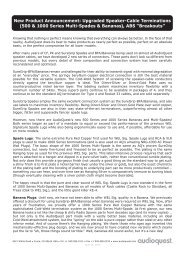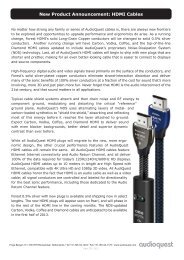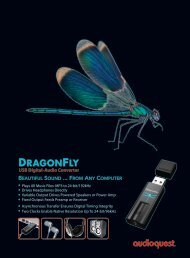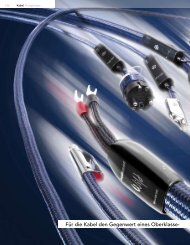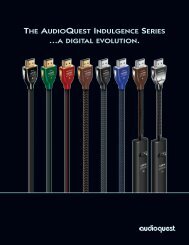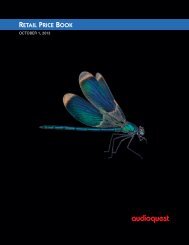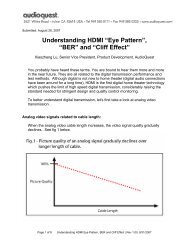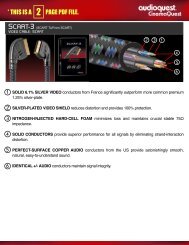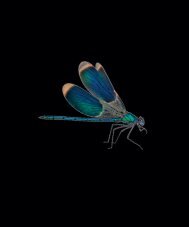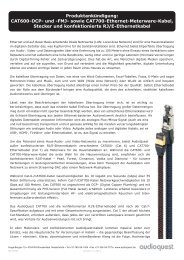2013 EU Retail Price Book - June - Audioquest
2013 EU Retail Price Book - June - Audioquest
2013 EU Retail Price Book - June - Audioquest
Create successful ePaper yourself
Turn your PDF publications into a flip-book with our unique Google optimized e-Paper software.
Digital-Audio Cables from HDMI to Computer Audio<br />
Many of the design and material elements that have<br />
proven so effective in AudioQuest’s analog cables are<br />
every bit as meaningful for digital- and computeraudio<br />
cables, including S/PDIF, HDMI, USB, USB-iPod<br />
30-pin, FireWire, and Ethernet. Solid-core conductors,<br />
superior conductor metals and insulation materials,<br />
proper geometry and overall precision of manufacture<br />
are no more or less important at the frontier of<br />
digital-audio cables than they are for analog cables.<br />
AudioQuest’s digital cables start with Long-Grain<br />
Copper (LGC) conductors, which is a low-distortion<br />
metal with fewer grain boundaries and low oxygen<br />
content. Each successive step up in the line adds the<br />
cost-effective performance benefits of silver plating<br />
(in increasing amounts), with the top cable in each<br />
digital cable family employing AudioQuest’s best<br />
conductor metal, solid 100% Perfect-Surface Silver<br />
(PSS). Geometry is optimized for each application,<br />
with insulation materials ranging from nitrogeninjected<br />
hard-cell foam in S/PDIF cables to foamedpolyethylene<br />
in HDMI, USB, FireWire and Ethernet<br />
cables. Because all audio cables are directional, all<br />
signal-pair conductors are controlled for directionality<br />
and connectors are labeled to ensure optimal sound<br />
quality. Top models also benefit from AudioQuest’s<br />
patented Dielectric-Bias System (DBS), which<br />
minimizes insulation-induced distortion, providing a<br />
drop in the perceived noise floor and an increase in<br />
dynamic contrast.<br />
On the frontier of computer audio the cabling and<br />
accessories matter every bit as much as in an all-analog<br />
audio system. The analog interconnects that connect<br />
your outboard DAC to your stereo are as important as<br />
the AC power cables that connect the computer audio<br />
components to your home’s AC power. When using a<br />
USB, Ethernet or FireWire DAC, the cables that connect<br />
the computer and DAC have as profound an impact<br />
on the sound you hear as the sonic characteristics<br />
of the DAC itself. It was never really just 1’s and 0’s to<br />
begin with, and that’s still true today. What’s perhaps<br />
more surprising and less intuitive is that the peripheral<br />
cables that connect the computer to external storage<br />
and connect components over networks also make<br />
a significant qualitative difference in sound quality.<br />
Every cable in a network-audio system adds distortion<br />
to the signal. Therefore the entire computer-audio<br />
experience will be more fun and more involving if<br />
low-distortion cables are employed throughout the<br />
entire computer- and network-audio system.<br />
OCTOBER 1, <strong>2013</strong> • <strong>EU</strong>RO (€) PRICE BOOK 13



